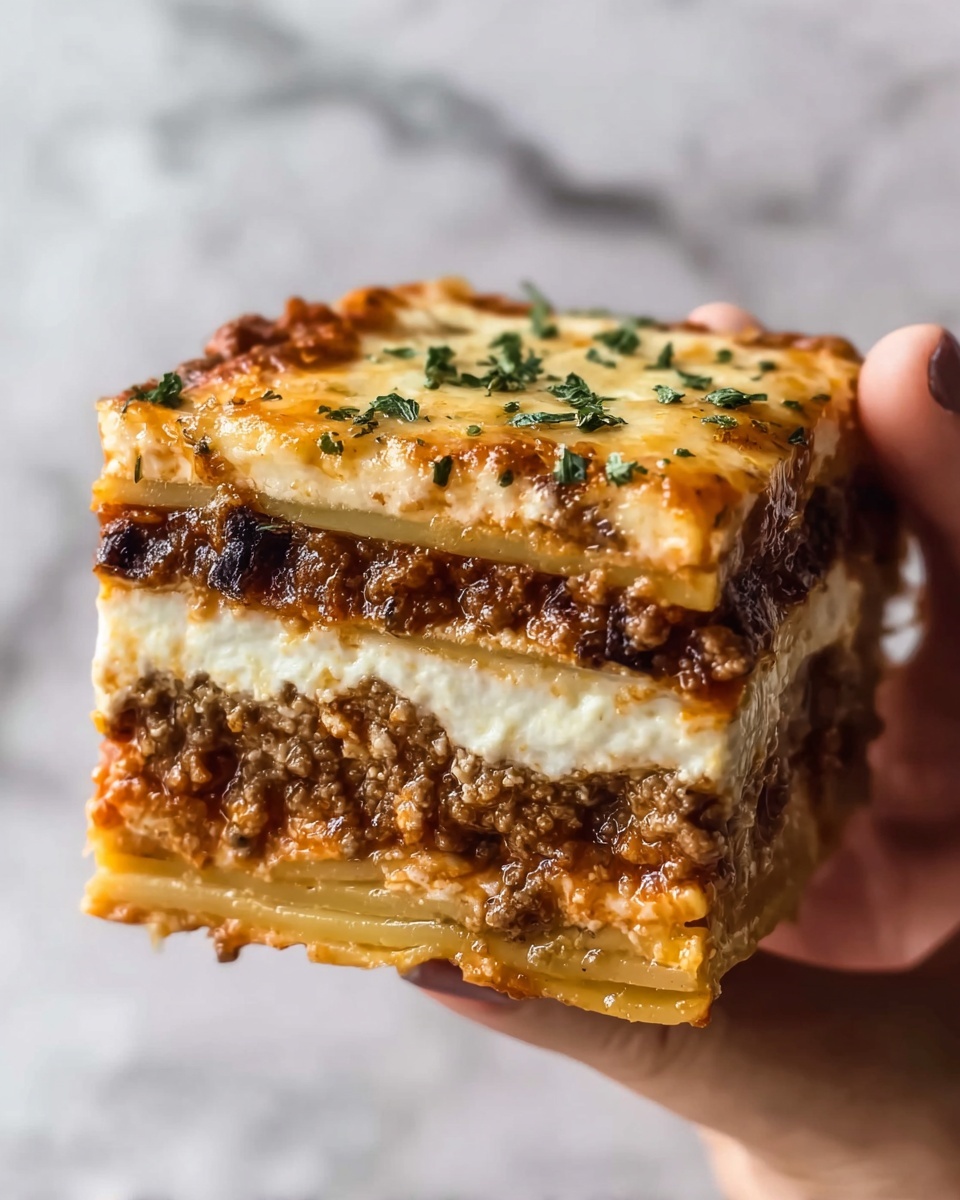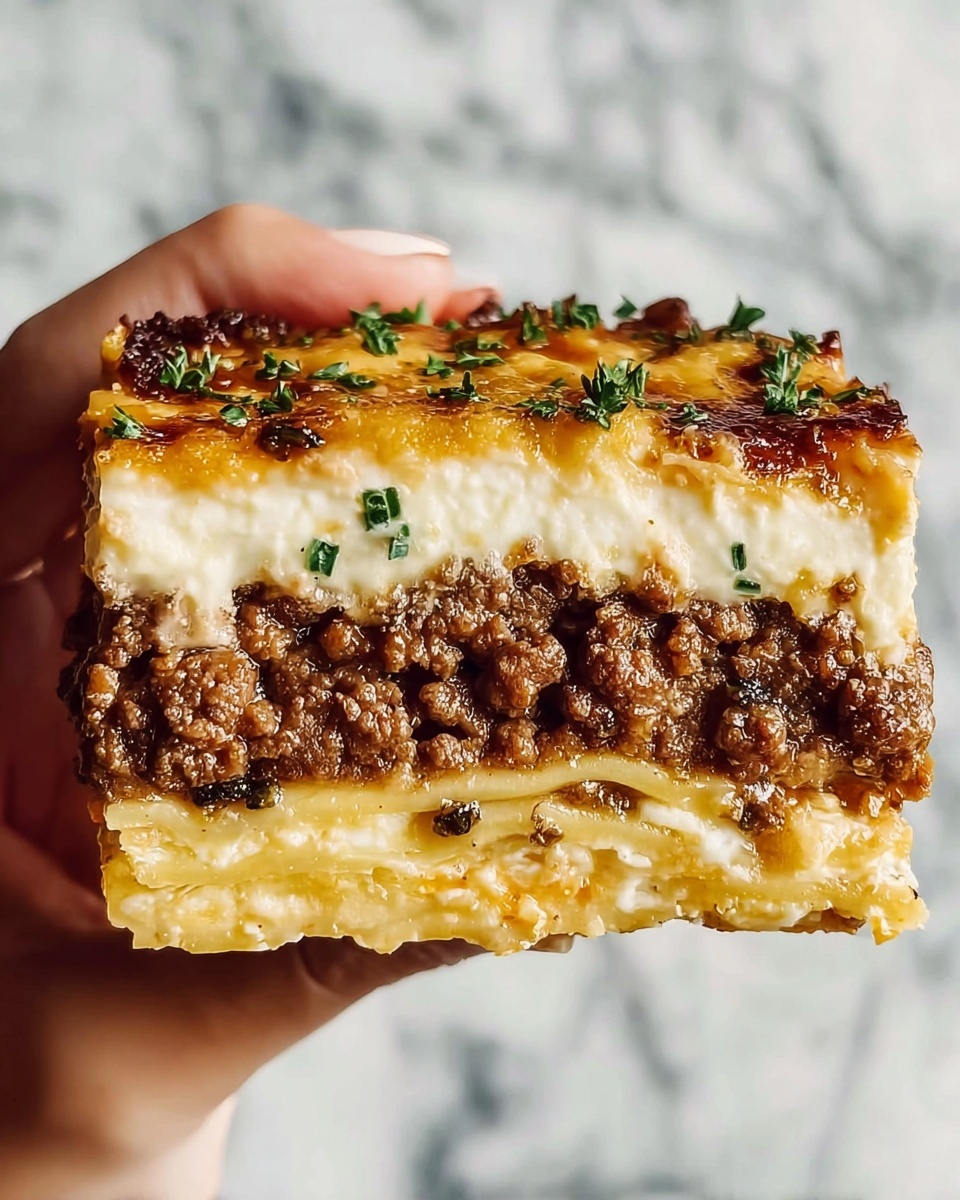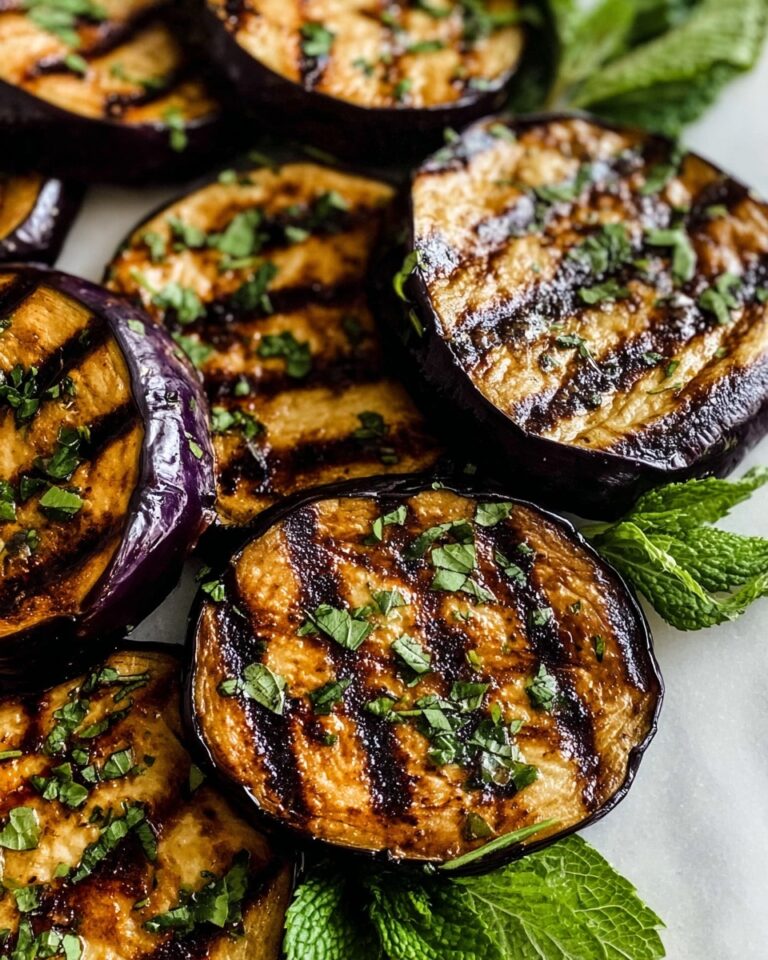Get ready to fall in love with a dish that’s truly a showstopper in any kitchen: the Outrageously Delicious Greek Moussaka Recipe. This recipe captures the heart of Greek comfort food with layers of tender potatoes, zucchini, and eggplants smothered in a rich, savory beef ragout and crowned with a creamy, nutty béchamel sauce. It’s a perfect balance of flavors and textures that transform simple ingredients into a feast that warms the soul and excites the palate. Whether you’re making it for a family dinner or impressing guests, this moussaka is a guaranteed crowd-pleaser that’s as satisfying as it is memorable.

Ingredients You’ll Need
Every ingredient in this recipe is a star, carefully chosen to build layers of flavor and texture. Fresh vegetables bring vibrant color and tenderness, herbs and spices add aromatic depth, while the béchamel sauce ties everything together with creamy indulgence.
- Olive Oil: For sautéing the onion and garlic to golden perfection, starting the dish with a rich base.
- White Onion: Finely diced to scoop up sweetness and aroma as it caramelizes slowly.
- Garlic: Just a couple of cloves finely diced to add a subtle punch of flavor without overpowering.
- Ground/Minced Beef: Lean but flavorful meat forms the hearty ragout that’s the soul of the dish.
- Tomato Paste: Concentrated tomato goodness that amplifies the savory depth of the beef sauce.
- Dry Red Wine: Adds acidity and complexity while deglazing to capture all those browned bits in the pan.
- Tomato Passata: Smooth pureed tomatoes that create a luscious, rich sauce consistency.
- Beef Stock: Boosts meaty savoriness, enriching the ragout’s flavor profile remarkably.
- Fresh Parsley: Adds brightness and a fresh herbal lift throughout the layers and for garnish.
- Fresh Thyme: Earthy and fragrant, it complements the meat sauce beautifully.
- Bay Leaf: Imparts a subtle woodsy background note to the simmering sauce.
- Salt, Sugar, Cinnamon, Black Pepper: The perfect blend of seasoning to balance savory, sweetness, warmth, and spice.
- Unsalted Butter: Essential for creating a silky, rich béchamel sauce that blankets the dish.
- Plain Flour: Thickens the béchamel to creamy perfection.
- Milk: Slowly whisked in to create a smooth, velvety sauce.
- Nutmeg and White Pepper: Delicate spices that give the béchamel a subtle warmth and complexity.
- Pecorino Romano Cheese: Freshly grated for tangy, salty sharpness in both the sauce and on top.
- Egg Yolks: Added to the béchamel for richness and that luscious, silky texture.
- Vegetable or Olive Oil: Used to fry the vegetables until tender and golden, an important step for flavor.
- Baking Potatoes: Peeled and thinly sliced to form the sturdy yet tender bottom layer.
- Zucchini/Courgettes: Sliced lengthwise to add a light, crisp contrast and freshness.
- Eggplants/Aubergines: The star vegetable with a creamy, silky texture after frying.
- Additional Parsley and Pecorino: To sprinkle between layers and on top for that extra burst of flavor.
How to Make Outrageously Delicious Greek Moussaka Recipe
Step 1: Creating the Perfect Meat Ragout
Start by heating olive oil and slowly cooking the diced onion until it turns soft and golden, unlocking a sweetness that creates the perfect foundation. Adding the garlic next builds a fragrant aroma that fills your kitchen and enhances the depth of the dish. Once the onions and garlic are ready, brown the ground beef thoroughly, breaking it up to make a rich crumbly texture. Stir in tomato paste and cook it through to concentrate its flavor before pouring in the dry red wine to deglaze the pan—this step lifts all those delicious browned bits stuck on the bottom and infuses the sauce with complexity. Then add the tomato passata and beef stock, followed by the fresh herbs and seasonings, letting everything simmer gently for about 30 minutes until the sauce thickens beautifully into a robust, savory ragout packed with all the signature flavors of Greek cooking.
Step 2: Preparing the Vegetables with Care
While the ragout simmers, prep your vegetables thoughtfully to remove excess moisture, which ensures the moussaka doesn’t turn soggy. Lay your eggplant slices out onto sheets of paper towel and sprinkle lightly with salt to draw out bitterness and water. Layer zucchini slices and potato slices with alternating paper towels, using a gentle pressing motion to soak up every bit of moisture from these layers. This simple but crucial step guarantees the finished dish will have that ideal tender but not watery texture that makes traditional moussaka such a delight.
Step 3: Frying the Vegetables to Golden Perfection
Heat enough vegetable or olive oil to submerge your vegetables for frying. Start with the potato slices, frying at a lower temperature until tender and just golden—this ensures they cook through fully. Remove and let excess oil drain before repeating the process with zucchini at a slightly higher heat for a light browning that brings out their natural sweetness. Finish by frying the eggplants, absorbing the oil beautifully while becoming silky and rich in flavor. Draining all the vegetables on paper towels after frying is essential to remove any extra oil and keep your dish from becoming greasy. Alternatively, you can bake some veggies if you prefer a lighter version, but nothing beats the flavor of gently pan-fried vegetables in this recipe.
Step 4: Making the Silky Béchamel Sauce
Next, melt butter over medium heat and whisk in the flour to form a roux—the basis for your luxurious béchamel. Slowly add room temperature milk in small portions, whisking constantly to prevent lumps, and simmer gently until the sauce thickens to coat the back of your spoon. Season with salt, white pepper, and fresh grated nutmeg for that subtle warming note. Remove from heat and stir in freshly grated Pecorino Romano, which melts smoothly into the sauce, adding sharpness and creaminess. Quickly whisk in the egg yolks for added richness and silkiness, then stir a small portion of the béchamel into your meat ragout—it might seem like a small detail, but it brings all those flavors together in harmony.
Step 5: Layering the Magic
Now comes the satisfying part where everything comes together. Start by layering the golden potatoes evenly on the base of your baking dish, sprinkling with parsley, Pecorino, and a little salt and pepper. Repeat with the zucchini, followed by half the eggplant slices, seasoning each layer delicately. Press the layers gently to create a compact casserole bed, then spread the luscious beef ragout over it like a flavorful blanket. Top with the remaining eggplants, seasoning once more, then pour over the creamy béchamel, spreading it smoothly to cover every inch of the surface. This multi-layer approach is what transforms the dish into the classic Greek comfort food we all adore.
Step 6: Baking and Finishing Touches
Finish with a generous sprinkling of Pecorino Romano on top and slide your moussaka into a preheated oven at 180°C (350°F). Bake for 35 to 45 minutes until the béchamel turns a beautiful golden color with slight charred edges, offering that irresistible crust that everyone loves. Once out of the oven, allow the moussaka to rest for at least 15 minutes. This resting period is essential because it lets the layers settle and firm up, making it easier to serve neat portions that hold their shape without falling apart. After this short wait, slice, serve, and get ready to enjoy one of the best comfort dishes you’ve ever made.
How to Serve Outrageously Delicious Greek Moussaka Recipe

Garnishes
Freshly chopped parsley sprinkled on top not only adds a burst of color but also a vibrant, fresh flavor that balances the richness perfectly. A final dusting of freshly grated Pecorino Romano cheese on each serving adds a savory, salty note that enhances every bite.
Side Dishes
Moussaka stands beautifully on its own, but pairing it with a crisp Greek salad featuring ripe tomatoes, cucumbers, red onions, olives, and feta cheese will brighten and lighten the meal. A side of warm, crusty bread is also a fantastic choice for soaking up any extra sauce and béchamel left on your plate.
Creative Ways to Present
For a special touch, serve individual portions in small ramekins to give a charming, rustic look at the table. Alternatively, accompany slices with a drizzle of thick Greek yogurt mixed with fresh mint for a refreshing contrast. Even layering leftovers into mini bowls and topping with extra cheese before briefly broiling them makes for a playful, delicious presentation.
Make Ahead and Storage
Storing Leftovers
Leftover moussaka keeps beautifully in the fridge for up to 3 days when stored in an airtight container. The flavors only deepen, making it a fantastic meal option for quick lunches or dinners later in the week.
Freezing
You can freeze baked moussaka in portions by wrapping tightly with plastic wrap and aluminum foil or placing in freezer-safe containers. It stays delicious for up to 2 months, making it perfect for batch cooking and stress-free meal prep.
Reheating
Reheat leftovers gently in the oven at 160°C (320°F) until warmed through to preserve that lovely texture and prevent drying out. Microwaving works too but may make the béchamel a bit rubbery if not watched carefully. A splash of milk over the top before reheating helps keep it creamy.
FAQs
Can I make this recipe vegetarian?
Absolutely! You can replace the ground beef with a hearty mix of lentils, mushrooms, or plant-based mince, and use vegetable stock instead of beef stock. The béchamel and layers remain the same, ensuring a rich and satisfying vegetarian version of this classic dish.
What type of cheese is best for moussaka?
The traditional cheese is Kefalotiri, but it can be hard to find outside of Greece. Pecorino Romano or Parmesan are excellent substitutes that lend the salty sharpness needed for the béchamel and topping.
Is frying the vegetables necessary?
Frying the vegetables adds incredible flavor and texture, giving the eggplants their signature silky richness and helping potatoes cook evenly. However, to lighten the dish, you can roast the vegetables instead, though the result will be slightly different in taste and texture.
Can I prepare parts of this dish in advance?
Yes! The meat ragout and béchamel can be made a day ahead and stored separately in the fridge. The vegetables can also be fried and refrigerated. Assemble everything just before baking for the best fresh flavors.
How important is the resting time after baking?
Very important! Resting allows the moussaka layers to settle and firm up, making it easier to cut clean slices that hold their shape. It also helps the dish cool slightly, so it’s safer and more enjoyable to eat.
Final Thoughts
If you’ve been craving a dish that’s truly irresistible, then this Outrageously Delicious Greek Moussaka Recipe is your new best friend for the kitchen. With its layers of flavor, comforting textures, and show-stopping presentation, it’s a recipe you’ll want to make again and again. Go on, give it a try and discover why moussaka holds such a beloved place in Greek food culture and hearts worldwide!
Print
Outrageously Delicious Greek Moussaka Recipe
- Prep Time: 40 minutes
- Cook Time: 1 hour 10 minutes
- Total Time: 1 hour 50 minutes
- Yield: 8 to 8 servings
- Category: Main Course
- Method: Frying
- Cuisine: Greek
Description
This Outrageously Delicious Greek Moussaka recipe is a classic layered casserole featuring tender slices of fried eggplant, zucchini, and potatoes, encasing a rich, aromatic beef tomato sauce, all topped with a luscious, cheesy béchamel sauce. Perfect for a hearty, comforting meal that delivers authentic Mediterranean flavors with a creamy, golden crust.
Ingredients
Meat Sauce
- 1 tbsp Olive Oil
- 1 large White Onion, finely diced
- 2 cloves of Garlic, finely diced
- 1.6lb / 750g Ground/Minced Beef (preferably fairly lean)
- 2 heaped tbsp Tomato Paste
- 1/2 cup / 120ml Dry Red Wine (can sub more beef stock)
- 1 cup / 240ml Tomato Passata
- 1 cup / 240ml Beef Stock
- 1/4 cup finely diced Fresh Parsley, plus extra to serve
- 1 tbsp finely diced Fresh Thyme Leaves
- 2 small or 1 large Bay Leaf
- 3/4 tsp Salt, or to taste
- 1/2 tsp Sugar
- 1/2 tsp Cinnamon
- 1/4 tsp Black Pepper, or to taste
Béchamel Sauce
- 4oz / 120g Unsalted Butter
- 4oz / 120g Plain Flour
- 4 cups / 1 litre Milk, at room temperature
- 1/2 tsp Salt, or to taste
- 1/2 small Nutmeg, grated (or 1/4 tsp ground nutmeg)
- 1/4 tsp White Pepper
- 1 cup / 80g freshly grated Pecorino Romano, plus extra to serve
- 2 Egg Yolks
Vegetables for Frying
- 2 cups / 480ml Vegetable or Olive Oil, or enough to cover veg in the pan for frying
- 1.6lb / 750g (approx 2 large) Baking Potatoes, peeled & sliced around 1/4 inch
- 1lb / 500g (approx 2 medium) Zucchini/Courgettes, sliced into approx 1/3 inch strips (lengthwise)
- 2lb / 1kg (approx 4 smallish) Eggplants/Aubergines, sliced around 1/3 inch thickness (lengthwise or rounds)
- Few pinches of Parsley & Pecorino to sprinkle between layers
- Salt & Pepper, as needed
Instructions
- Prepare the meat sauce: Heat 1 tbsp olive oil in a large pan or pot over medium heat. Add the finely diced onion and sauté until soft and golden. Add the garlic and fry for another minute. Incorporate the ground beef, cooking until fully browned, breaking it up as it cooks. Stir in tomato paste and cook for 2 minutes. Deglaze with the red wine, then add tomato passata and beef stock. Add parsley, thyme, cinnamon, salt, sugar, black pepper, and bay leaf. Simmer gently for around 30 minutes, stirring occasionally until thickened.
- Prepare and salt the vegetables: On a flat surface, lay several layers of paper towel. Layer the eggplant slices and sprinkle both sides with salt, then cover with two layers of paper towel. Add zucchini slices on top, cover with another paper towel. Finally, add potato slices and top with another paper towel layer. Press gently to absorb excess moisture from all vegetable layers. This step helps prevent sogginess in the final dish.
- Fry the vegetables: Heat vegetable or olive oil in a pan until it gently sizzles at approximately 150°C (300°F). Fry potato slices on both sides until golden and tender. Remove and drain on paper towels. Increase the oil temperature to about 170°C (340°F) and fry zucchini slices until softened and lightly browned. Finish by frying eggplant slices until tender and browned. Drain all vegetables on paper towels to remove excess oil. Alternatively, note section offers baking as a faster option.
- Make the béchamel sauce: Melt butter in a pot over medium heat. Stir in flour to create a roux, cooking briefly. Gradually whisk in room temperature milk to avoid lumps. Continue stirring and simmer until the sauce thickens enough to coat the back of a spoon. Season with salt, white pepper, and grated nutmeg. Remove from heat, stir in grated pecorino until smooth, then quickly whisk in egg yolks. Reserve 1/2 cup of béchamel sauce to mix into the meat sauce.
- Assemble the moussaka: Begin layering in a baking dish with potato slices, overlapping where necessary. Sprinkle with parsley, pecorino, salt, and pepper. Add zucchini layer with the same seasoning. Arrange half the eggplant with salt and pepper over the zucchini, pressing to close gaps. Spread meat sauce evenly over eggplant, then top with remaining eggplant slices. Finish by pouring béchamel sauce over the top layer, smoothing evenly.
- Bake and serve: Sprinkle additional pecorino cheese on top. Bake in a preheated oven at 180°C (350°F) for 35–45 minutes, until the top is golden and lightly charred. Let the moussaka rest for at least 15 minutes before serving to allow it to set and hold its shape. Garnish with extra parsley and pecorino as desired, then enjoy this hearty Greek classic!
Notes
- If you want to speed up cooking, you can bake some vegetables instead of frying. This reduces oil usage and prep time.
- Use paper towels or clean tea towels to absorb vegetable moisture to prevent sogginess in the final bake.
- Ensure to drain the fried vegetables thoroughly to avoid oily layers in the moussaka.
- The choice of cheese is flexible; traditionally Kefalotiri is used, but Pecorino Romano or Parmesan are good substitutes.
- Resting the moussaka after baking improves slicing and presentation, so do not skip this step.
- The cinnamon and nutmeg add depth and warmth to this dish; don’t omit them for authentic flavor.








